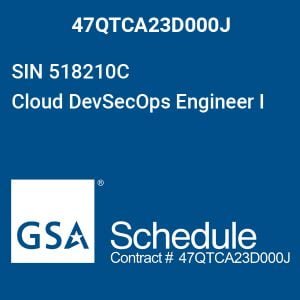The Amazon Web Services (AWS) marketplace is a digital catalog designed for customers where they can successfully run businesses and build solutions by locating, buying, deploying, and managing data, software, and services from third parties.
Initially, when the AWS marketplace was launched in 2012, it offered limited functionality. People only used it as a means to simplify the use of Amazon Machine Images (AMI).
However, as its use became more prevalent, vendors started offering software and managed open-source products to customers. As more time passed, the AWS marketplace delivered even more features and kept up with the changing times and technology.
Today, there is so much you can do with it than get managed AMIs. Here are 5 things you can do on the AWS marketplace in 2022:
Unlock the future of intelligent applications with our cutting-edge Generative AI integration services!
- Purchase Machine Learning Models
The AWS marketplace offers countless features, including pre-trained machine learning models. Using the Amazon SageMaker, it is possible to purchase ML models.
There are a number of advantages to it. For starters, the models can perform a wide range of tasks, including detecting objects, reading into buyer behavior, processing natural language, and extracting data.
The best part is that these models are fully developed and ready to use. You can integrate them with your applications using AWS CLI, API, or REST.
Another benefit of buying machine learning models is that they let you have complete control over your data, allowing you to enhance your security. You can always deploy the model in Amazon Virtual Cloud instead of the default network isolation mode to restrict or monitor traffic or access additional security features. - Access a Wide Range of Datasets
If you need access to large datasets, there is no better place than the AWS marketplace to get them. With more than 3000 datasets listed in the data products category, you can find almost anything you’re looking for.
The datasets can be of any niche, from healthcare to gaming. But there is a catch. While some datasets can be accessed free of cost, others might require a subscription. However, opting for a subscription lets you process and visualize data using AWS data tools. - Private Offers
One of the most interesting features of the AWS marketplace is the Private Offers feature. This feature lets buyers receive private offers from sellers. After receiving the offer, you can negotiate to customize the pricing and terms to match your budget and requirements.
After agreeing upon a deal, the seller sends you an offer explicitly created for your AWS account. Once you accept the private offer, you can start using the product or service at the predetermined price and terms of use. The pricing and licensing terms in private offers are only designed for the buyer’s account.
However, it is essential to note that each offer comes with an expiration date. If you fail to accept the private offer within its due time, you will automatically be moved to the product’s public offer. - Purchase SaaS Products
Software-as-a-Service products are readily available in the AWS marketplace. However, these products can only be accessed in the seller’s software environment. You can buy SaaS products using different pricing models, including the following:- SaaS Subscriptions
If you opt for a SaaS subscription, the seller tracks your usage so that you only have to pay for the services you avail yourself. The billing is managed via the AWS bill, similar to many other products on the AWS marketplace. - Upfront Payments
Generally, if you need a SaaS product for the long-term, you can make upfront payments when you sign a contract with the seller. Instead of making payments after use, you make an upfront payment for owning a small portion of the license for a particular time or availing a predetermined quantity of the data ingested. For instance, if you want to access a product’s license for 5 years or want to use 20 GB of data in one day for a year, you can make the payments and use the product at the decided terms. - Free Trials
Yes, you can use SaaS products for free. Some vendors offer free trial contracts for SaaS products in the AWS marketplace. To locate such offers, you can filter your search. The sellers list the period of free trials and the usage of free software included in the package.
It’s an excellent way to evaluate software and determine whether or not it would be a good fit for your business. If you want to purchase the paid version, you can always use the private offer feature to strike a deal or simply upgrade to the paid version of the software. But if you don’t want to upgrade to a paid version, you can let the free trial expire.
- SaaS Subscriptions
- Utilize License Grants
In most cases, the paying account isn’t the one that uses the software. That’s why the AWS marketplace lets you use license grants. The license grants create visibility, allowing a clear view of all the services you paid for and who will be using the services.
The Bottom Line
That’s the end of the 5 things you can do on the AWS marketplace. But in the upcoming years, there are bound to be even more features that are convenient for both buyers and sellers. Even today, the AWS marketplace continues to evolve to keep up with the changing time and holds a promising future ahead.
Small Disadvantaged Business
Small Disadvantaged Business (SDB) provides access to specialized skills and capabilities contributing to improved competitiveness and efficiency.
The SaaS subscription pricing model, in particular, has become the most popular option as it does not bind buyers into a contract for many years.
Further blogs within this 5 Things You Can Do on the AWS Marketplace category.






